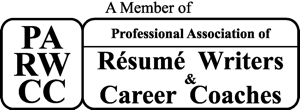iStockphoto.com | FoxysGraphic
If you are a designer, artist, photographer, model, or advertiser you rely on your portfolio – a case, binder, or notebook showcasing your most accomplished work. For “creatives”, the portfolio is a traditional and essential tool used during the course of their work and when a job search is on.
Contemporary portfolios have expanded to include the digital domain, social media networks, and can also be an optional but effective differentiator among “non-creative” professionals. Portfolios give you an additional opportunity to in a deeper way.
No matter who you are, or whether you have a traditional portfolio, a digital one, or both, it needs to be polished and professional. Here are some guidelines for you to consider
TRADITIONAL (I.E., PHYSICAL) PORTFOLIOS
For creatives, especially designers of every sort, the physical portfolio is the first choice he or she makes that reveals his or her professionalism and style. The portfolio itself can be just as beautiful as what is inside and makes just as strong of a statement about the person carrying it. Choose a portfolio that feels like a natural extension of who you are.
Everything must be important. With a traditional portfolio, you are limited by physics. Your case can only hold so much. This forces you to formulate a “portfolio strategy” to compile and assemble the work in a way that dovetails your job/career goal.
Choose your best work by committee. Enlist some trustworthy opinions to select a cross-section of your most spectacular and, if branded, recognizable work. A range of perspectives will temper self-criticism and parental bias alike.
Tell The Greatest Story Ever Told, Which is You. Organize your best work so it tells the story of you -- your unique perspective, your distinctive style, your inspiring journey, and your growth -- in whatever your field of endeavor.
DIGITAL PORTFOLIOS
If you’re already in a profession that requires hauling around a physical portfolio, you already have a digital portfolio as well, which, while necessary, have advantages and disadvantages.
Disadvantages:
Creatives like to be in-person when presenting work so they can act as its interpreter and chief advocate. It’s natural to have a pure vision of how your portfolio should be perceived, something is often lost during the transformation of that vision into the material.
Online, you have no limits – and that is not necessarily good. It is tempting to include too much. Be cautious, too much information can lose the focus and achievement-oriented result you get with a portfolio-as-story approach.
There is no substitute for the real thing. You can study photographs of the Sistine Chapel for years and it will not prepare you to see the real thing. A digital scan may not “pop” off the page like a printed piece.
Advantages:
The digital portfolio is on a website that is another opportunity for you to show off your skills in an organic way. Like the traditional portfolio, the website says just as much about you as its content.
Anywhere, anytime. You can pull up a digital portfolio on any device to show to anyone at any time for instant self-promotion. The link to your work can be easily and widely distributed. No matter how great your 100-year old leather Tuscan case may be, it does not fit in your pocket.
Your digital portfolio is a companion to your traditional one. This is yet another opportunity to tell you story. You can use the same work, but presented to take advantage of the medium, or different work as long as it follows your overall portfolio strategy.
Links to your portfolio are often required on job applications. Online job applications for creative roles typically ask for links to any creative work you have done, so a professional well -organized online portfolio is a must.
More and more creatives design in, and for, the digital world. A traditional portfolio isn’t as strong of an advantage for a game developer as a visual artist. For design that lives and breathes in the digital world, the digital portfolio becomes the primary channel of promotion.
PORTFOLIOS FOR NON-CREATIVE PROFESSIONALS
Portfolios are not considered required tools of the trade for professionals in non-creative roles, and it would seem awkward if a job candidate interviewing for an accounting position pulled out an oversized case and started highlighting their most complex Excel spreadsheets.
This doesn’t seem fair. Most people are limited to a cover letter and resume. However, in our contemporary online job market two paradigm shifts have taken place, 1) the now standard use of Automatic Tracking Systems, and 2) the rise of professional social media networks, notably LinkedIn.
It’s not a portfolio, but it’s portfolio-esque. The additional layer of the application process swept in by the use of Automatic Tracking Systems, often includes fields that allow anyone, not just Creatives, to include links to external websites, something you can’t do on a resume.
LinkedIn has expanded the resume. Perhaps your local paper wrote an article about you, or you’re an engineer with several high-profile patent applications. Maybe you have a new certification, or documents you wrote for which you won an award. You can include all of these things on your LinkedIn profile, which every recruiter and hiring manger uses.
Social media networks have made every professional with a digital footprint a portfolio. Like it or not, recruiters and hiring managers don’t just stick with LinkedIn. Every social media account, professional or personal, is fair game. This once again gives you an opportunity to showcase professional accomplishments that can’t be communicated, for one reason or another, through a cover letter or resume.
Philip Roufail contributed to this article.
Scott Singer is the President and Founder of Insider Career Strategies Resume Writing & Career Coaching, a firm dedicated to guiding job seekers and companies through the job search and hiring process. Insider Career Strategies provides resume writing, LinkedIn profile development, career coaching services, and outplacement services. You can email Scott Singer at scott.singer@insidercs.com, or via the website, www.insidercareerstrategies.com.





